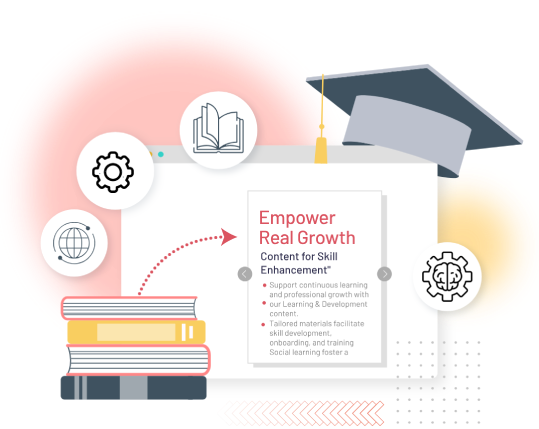
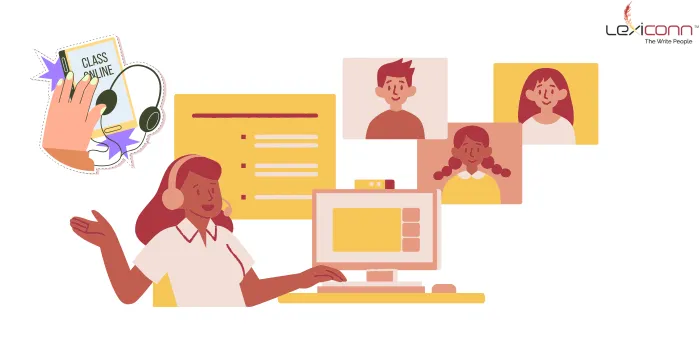
Here’s a fun fact: Online education isn’t longer taken casually. It’s a booming market expected to hit $375 billion by 2026. With growth rates soaring at 12.4% annually, everyone’s elbowing their way to the top of the eLearning food chain. And what’s the secret sauce for standing out in this overcrowded digital classroom? Content marketing!
But hold on—content marketing in eLearning isn’t just about tossing some infographics, videos, and blog posts on the web. It’s about weaving stories that resonate with learners, building trust with your audience, and delivering actual value. Yes, value—like the thing you promised your learners when you first convinced them that their online courses were better than textbooks.
Did you know that in 2021 alone, the eLearning market swelled to over $250 billion? A Global Market Insights report even revealed the pandemic supercharged this growth, catapulting online education adoption by 300%. Sure, we’re grateful Zoom university saved the day, but now everyone’s here—providers, platforms, and learners—and it’s getting loud.
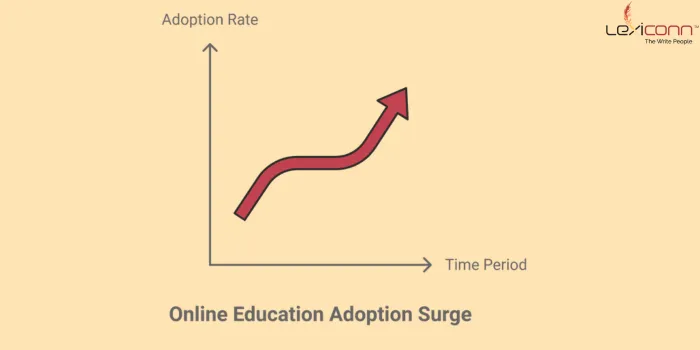
For eLearning providers, this means one thing: You need to rise above the noise. And no, your PowerPoint-to-video content isn’t going to cut it anymore. Learners today are savvy, picky, and armed with more choices than ever. To capture their attention, you need a content marketing strategy that feels more like a playlist they want to binge on than a lecture they’d rather skip.
Content marketing is no longer the side salad—it’s the main course. For online education platforms, it’s the secret to wooing students, keeping them engaged, and ensuring they stick around for dessert (a.k.a. more courses).
Unlike traditional marketing, which is all flash and little substance, content marketing is about building trust. It’s the slightly awkward but undeniably charming friend who wins everyone over at the party.
You can’t just slap together a few blogs and call it a day. In eLearning, content marketing is your invitation to the cool kids’ table—a chance to establish yourself as an authority while creating connections that last longer than your vacation days. Let’s dive in.
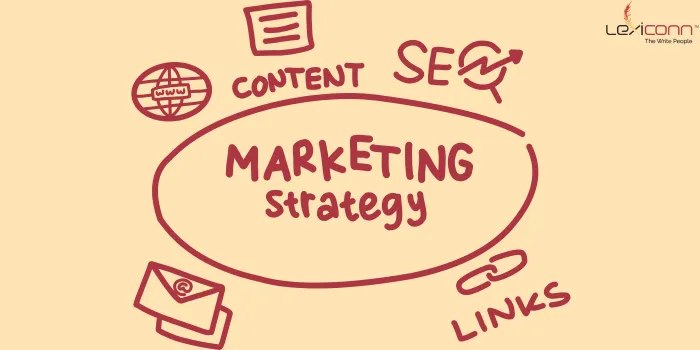
Imagine your content is a Netflix queue—diverse, binge-worthy, and impossible to abandon. Successful eLearning platforms understand this and deliver across multiple formats:
And here’s a statistic to get your gears turning: 91% of B2B marketers swear by content marketing, with the top players juggling 7-8 content types. (Yes, that’s your cue to level up.)
Here’s the thing about content marketing: you can’t just throw stuff at your audience (posting on the internet) and hope something sticks. That’s not a strategy; that’s chaos. And chaos doesn’t sell courses. What you need is an eLearning strategy—sharp, targeted, and as compelling as a well-timed punchline.
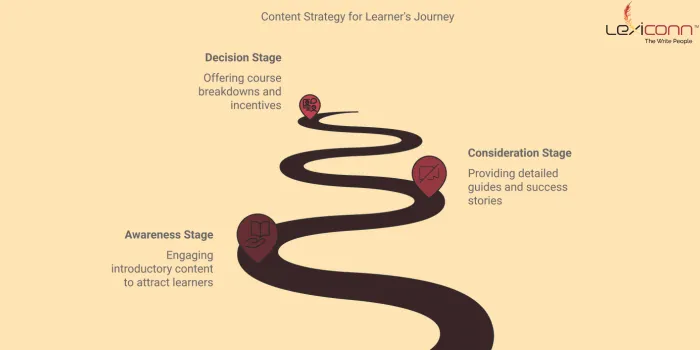
The process of creating content involves more than continuously posting your ideas/information on the internet. You need a strategy—an eLearning strategy that hits all the right notes at every stage of the learner’s journey. Here’s how you map it out:
This is the “I didn’t know I needed this” moment. Your job? Reel them in.
Now they’re curious, and you’ve got their attention. Keep it. This is the “Wait, this is a thing?!” phase, and your job is to gently nudge them into the rabbit hole.
Time to seal the deal. This is where your content marketing magic pays off.
Content mapping isn’t rocket science, but it is deliberate. It’s about creating a seamless experience where every piece of content builds momentum.
A good story turns online education into something more than endless slides and lifeless bullet points. By weaving in personal experiences (the kind that makes you cringe in hindsight but captivate your audience), juicy case studies, and real-world scenarios, you’re not just teaching—you’re creating a moment.
What’s in it for you?
So, next time you’re stuck with lifeless content, ask yourself: Would I swipe right on this story? If not, maybe it’s time to dig a little deeper. After all, even educational content deserves to feel alive.
SEO is the nerdy best friend of content marketing—always overlooked but secretly doing all the heavy lifting. And when it comes to online education, it’s essential.
Here’s the game plan:
The reward? Your content lands on Google’s first page, where 91.5% of all clicks happen. Think of it as your VIP pass to visibility. Without it, your content is like a brilliant lecturer in an empty classroom. Get it right, and they’ll be lining up for your next lecture.
Modern learners expect personalized experiences. Implement:
Personalized content isn’t just thoughtful; it’s wildly effective, boosting engagement by up to 10x. If your eLearning strategy isn’t tapping into this, you’re leaving learners feeling like they’re just another face in the crowd. And honestly? They deserve better. So do you.
Multimedia content is the shiny red lipstick of your eLearning strategy—it catches attention and refuses to be ignored. Pair it with interactive elements, and suddenly, your online education efforts are the life of the digital party. Why settle for dull when you can dazzle?
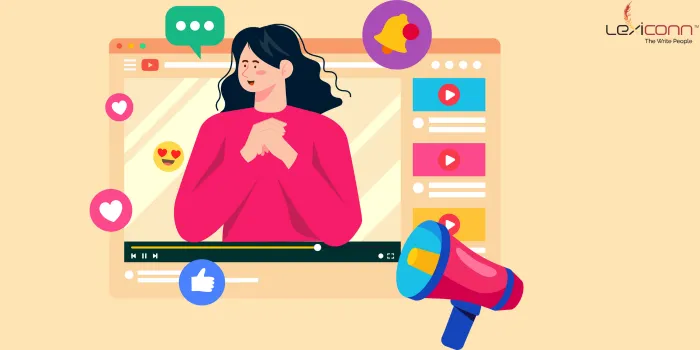
Video Content:
Interactive Elements:
The kicker? Interactive content generates twice the conversions of passive material. So, if your eLearning strategy doesn’t feel like an immersive experience, maybe it’s time to give it a makeover. Don’t just educate—entertain.
Building a learning community is like hosting a really good dinner party. Get the mix of people, atmosphere, and interaction just right, and no one will want to leave. It’s not just content marketing—it’s content matchmaking.
Create spaces where learners can connect and share:
Here’s the magic: platforms with thriving communities boast five times higher retention rates. Translation? Your learners stick around, and your online education strategy becomes unforgettable. Who knew being social could be so…strategic?
Ah, metrics. The nosy little detectives of your eLearning strategy. They poke, prod, and reveal whether all that content marketing effort is actually working—or just looking pretty.

Track the essentials:
Here’s the thing: Organizations that document their content marketing strategy are 313% more likely to succeed. It’s practically a superpower. Without it, your online education efforts are like shouting into the void. With it? You’re the teacher everyone remembers.
If you’re losing your audience faster than a digital marketing trend dies on Twitter, it’s time to up your game. The secret sauce? Engagement strategies that make learners stick around long enough to actually learn.
Here’s the thing about learners: they’re your best marketers. Why not let them do some of the heavy lifting? Encourage them to flex their creative muscles and share:
It’s content for eLearning that feels real, relatable, and ridiculously engaging. Plus, nothing says “trust us,” quite like someone else shouting your praises. Need help structuring this kind of magic? That’s where LexiConn comes in—we’ll turn your learners into your loudest advocates.
Let’s be honest, nobody has the attention span for a three-hour lecture anymore. Micro-learning is the espresso shot of eLearning content: short, sharp, and straight to the point.
Craft bite-sized brilliance with:
The result? Engagement strategies that cater to the modern learner’s goldfish-like attention span. LexiConn can help you trim the fat and deliver content that keeps learners coming back for more.
Want learners to take you seriously? Show them you’ve got brains and swagger. Establish your eLearning platform as the Beyoncé of its industry with:
Not sure how to pull it off? LexiConn doesn’t just create content—we help you own the conversation. Book a 30-minute free session with us to learn more!
The future isn’t just coming—it’s already here. If your eLearning strategy doesn’t feel like it’s one step ahead, it’s probably two steps behind. So, what’s next?
The takeaway? Future-proofing isn’t optional—it’s essential. And when it comes to creating innovative, high-impact content for eLearning, LexiConn is the agency that can help you get there.
Successful eLearning content marketing isn’t just about throwing content at the wall and hoping something sticks—it’s about crafting an experience that makes your learners feel, connect, and learn something. Innovation, empathy, and strategic communication are your holy trinity here. Get them right, and you’re not just marketing courses; you’re creating transformative experiences. Yes, that’s as dramatic as it sounds—and no, it’s not optional.
The future of eLearning belongs to the innovators, the storytellers, the ones who can make a learner go, “Wait, what happens next?” And guess what? Organizations with a documented content marketing strategy are 62% more likely to crush their goals.
Take the first step—don’t overthink it. Schedule a free 30-minute consultation with LexiConn’s expert content team. We’re not just about content for eLearning; we’re about content that actually works. Let’s explore how to craft engagement strategies that attract, inspire, and retain learners while making your eLearning platform the one they can’t stop raving about.
Sounds good? Let’s get started.



I have read and accept the Privacy Policy
Read More